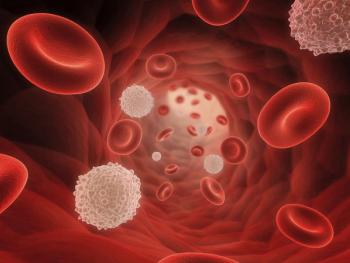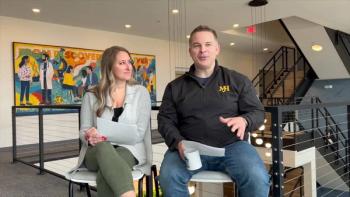
Primary Radiotherapy Plays Important Role in Early Follicular Lymphoma
A retrospective study supported the role of primary radiotherapy in early-stage follicular lymphoma.
Patients with early-stage follicular lymphoma who relapsed after primary radiotherapy had excellent prognoses, supporting “the role of primary radiation in the management of early-stage disease,” according to a retrospective study.
Of the approximate one-third of patients with relapsed disease after primary radiotherapy, the majority were still alive 3 years post-relapse, reported
“Although the recently reported randomized
The study included 512 patients, with a median follow-up of more than 4 years. All patients had received 24 Gy or more of radiotherapy for stage I to II follicular lymphoma grades 1 to 3A and were age 18 years or older. All had PET-CT staging.
Relapse occurred in 29.1% of patients at a median of 23 months after radiotherapy. The majority of recurrences occurred at sites outside of the prescription treatment volume.
Relapsed patients were followed for a median of 33 months post relapse. The 3-year overall survival rate for these patients was 91.4%. Patient histology at the time of disease relapse included 93 patients with indolent disease, 3 with follicular lymphoma 3B/NOS, and 18 with diffuse large B-cell lymphoma (DLBCL); 35 patients were not biopsied.
Those patients whose disease relapsed within the first year post-radiotherapy were more likely to have initial stage II follicular lymphoma with a higher ECOG score. In addition, these patients had significantly worse 3-year overall survival rates compared with patients without relapse in the first year (88.7% vs 97.6%; P = .01). Further, patients who relapsed within 2 years had significantly worse 3-year overall survival rates than those without relapse in the first 2 years (91.8% vs 97.0%; P = .048).
“The observation that the small subset of patients who progress early after radiation have poor outcomes also confirms similar findings in systemically treated patients with follicular lymphoma, and emphasizes that a unique, as yet to be defined, biology likely explains the treatment refractoriness; this is currently the focus of many ongoing studies,” Friedberg told Cancer Network.
“Given these excellent outcomes with radiation alone, I concur with the authors’ conclusion that adjuvant systemic therapy, although demonstrating progression-free survival benefit in one problematic randomized trial, is not indicated for most patients with stage I disease,” he said. “The decision on optimal therapy needs to be individualized, and may include involved site radiation therapy, observation, or single-agent rituximab in various settings.”
Newsletter
Stay up to date on recent advances in the multidisciplinary approach to cancer.


















































































